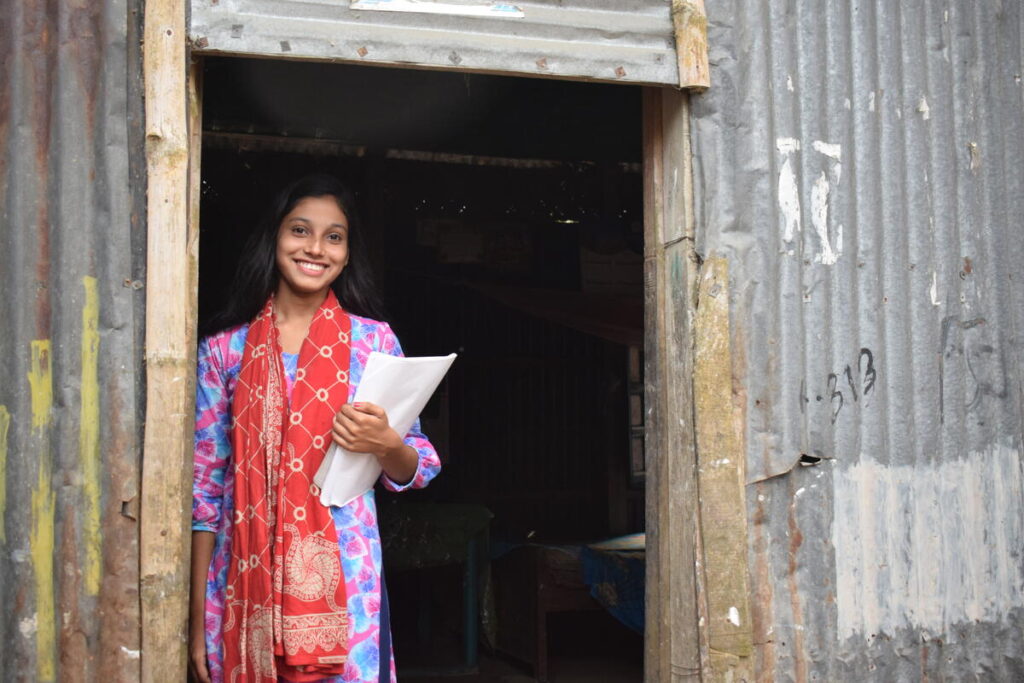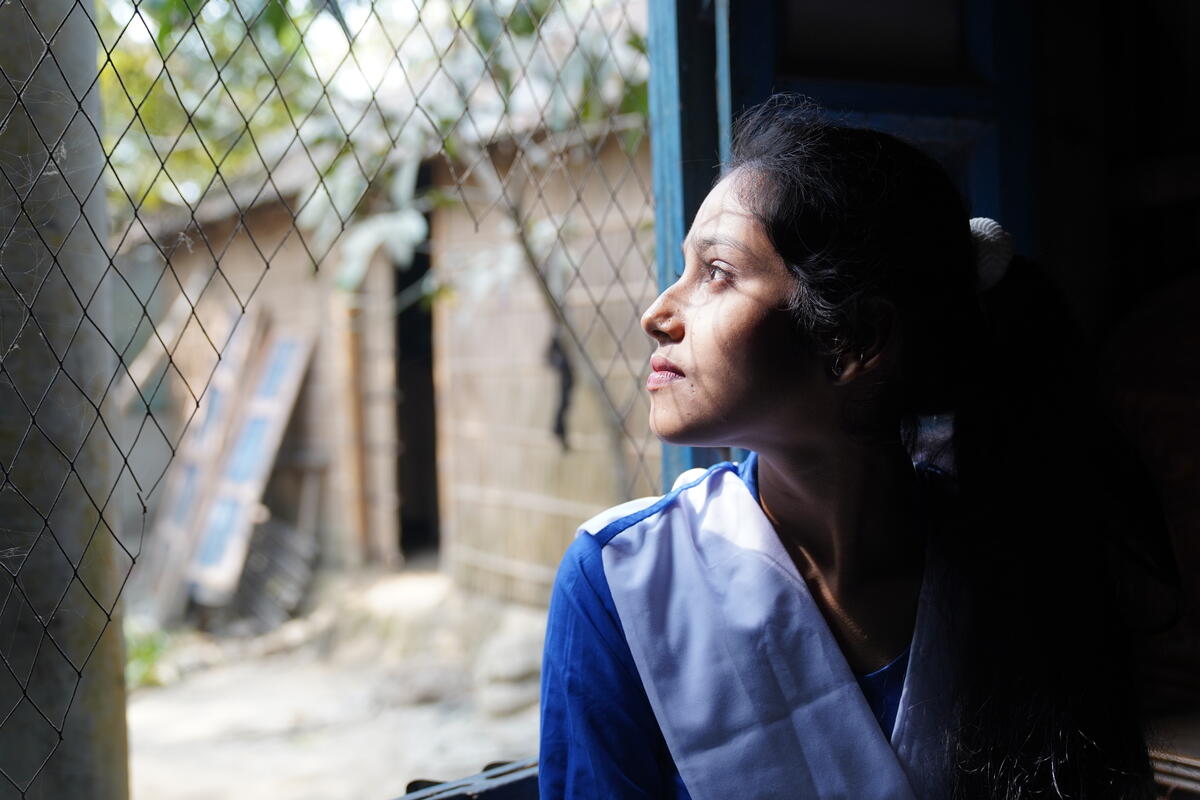Estimated read time: Five minutes
Sumaiya, a 17-year-old girl from a marginalized family from Jamalpur, Bangladesh, is determined not to become a child bride. In Jamalpur, more than 52% of girls are married before the age of 18. Despite pressure from her relatives, who believe marrying her off would lessen their burden, Sumaiya sought help from the South Katherbil Adolescent Club of World Vision Bangladesh.
This group fights for social justice in their community and acts as agents of change. The club teaches life skills and rights-based awareness to build confidence and leadership within adolescent girls. Through their peer education for health, nutrition, and WASH, Sumaiya learned about the negative effects of child marriage on physical and mental health. Thanks to the club’s intervention, Sumaiya was bravely able to advocate to call off the wedding and pursue her dreams. Her story is one of many success stories from the activities of this club, which has greatly raised awareness in the village and prevented many young girls from becoming child brides.

But stories like this don’t always have happy endings. The harmful practice of child marriage is becoming increasingly common in vulnerable communities:
- According to UNICEF, 21% of girls worldwide are married before the age of 18. This equates to approximately 650 million women and girls alive today.
- The highest rates of child marriage are found in sub-Saharan Africa, where 37% of girls are married before age 18, and South Asia, where 30% of girls are married before age 18.
- In some countries, the prevalence of child marriage is extremely high. For example, in Niger, 76% of girls are married before age 18, while in Bangladesh, the figure is 59%.
- While child marriage affects both boys and girls, girls are disproportionately affected. Girls are almost three times more likely than boys to be married before the age of 18.
- Child marriage often results in girls dropping out of school. In low-income countries, only 13% of girls who marry before age 18 finish secondary school, compared to 36% of girls who marry after age 18.
Child marriage represents both gender-based violence and a violation of children’s rights. Despite being illegal in most countries, child marriage remains prevalent in many parts of the world. The practice is most prevalent in sub-Saharan Africa and South Asia, but it occurs in many other regions as well. An estimated 650 million women and girls alive today were married before the age of 18. This equates to approximately 1 in 5 women worldwide.
Child marriage is a critical issue that violates the basic human rights of millions of children worldwide, particularly girls. It perpetuates cycles of poverty, gender inequality, and social injustice, limiting the opportunities for personal and economic growth of affected children, often trapping them in a cycle of abuse and exploitation. Child marriage puts children at risk of lifelong physical and psychological harm, violating their rights to education, health, and protection from harm and abuse. Moreover, the issue has a significant impact on the global economy, as child marriage perpetuates poverty, reduces productivity, and increases healthcare costs. Ending child marriage is, therefore, essential not only for the wellbeing of children and their families but also for achieving the global development goals of ending poverty and promoting gender equality.
And the COVID-19 pandemic has further exacerbated the problem. Lockdowns and school closures have led to an increase in child marriage rates in many countries, as families struggle to cope with economic hardship. The United Nations estimates an additional 10 million girls will be at risk of becoming child brides due to the pandemic.
Girls who are married at a young age are more likely to drop out of school, suffer from health problems related to early pregnancy and childbirth, and experience domestic violence. They are also more likely to live in poverty, with limited opportunities for personal and economic growth.
The practice violates children’s rights to education, health, and protection from harm and abuse, putting them at risk of lifelong physical and psychological harm. Girls who marry before the age of 18 are at higher risk of experiencing domestic violence. They are also more likely to die from complications related to pregnancy and childbirth, which is the leading cause of death for girls aged 15-19 in low- and middle-income countries.
Child marriage sustains the cycles of poverty, ill health, limited education, and violence, which exert adverse effects on global development, prosperity, peace, and stability. Congress should fund the Combatting Child Marriage account at no less than $30 million to diminish the occurrence of child marriage and attend to the needs of already married girls across the world. Congress needs to allocate substantial funding to the Maternal and Child Health Account to effectively meet the needs of adolescent girls who are married and young mothers.
Efforts to fight child marriage are possible because the United States sets aside a budget specifically aimed at combatting the root causes of child marriage – and YOUR voice can play a role in keeping that funding in place! This budget makes it possible for us to work with communities where child marriage is common, helping ensure children can enjoy childhood, complete their education, and determine the outcome of their own lives.
ACT NOW:
Top photo: Young girls in Bangaldesh are particularly at risk of child marriage, where laws often go unenforced, and families are forced to sell children to provide for their families. (©2023 World Vision/Fariha Jahan, Lipy Mary Rodrigues)


